Taunton, Somerset, England, UK 作者: 来源: 发布时间:2021-07-27
I. Population and Area
Continent: Europe
Country: The U.K
State/Province: England
City/Town: Taunton, Somerset
Total Area: 6.301 (sq mi)
Population in 2011: 69.6 (thousand)
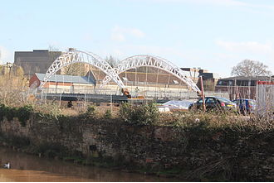
II. Natural Geography (environment and resources)
Geology
The Taunton area has Permian (295–250 million years old) red sandstones and breccia outcrop, while rocks of Triassic age (248–204 million years ago) underlie much of Somerset and form the geology of the Somerset Moors and Levels.
Nature reserves
There are several local nature reserves in and around Taunton, protected under a statutory designation in Section 21 of the National Parks and Access to the Countryside Act 1949. South Taunton Streams is an urban wetland. In the northern suburbs is the Children's Wood riverside reserve, offering a movement corridor for animals such as otters along the banks of the River Tone. Birds at the site include the kingfisher, dipper, grey wagtail, mute swan, grey heron and reed warbler. Its butterflies include the small and large skipper, marbled white, small heath and small copper, along with dragonflies and damselflies.
Climate
Like the rest of South West England, Taunton has a temperate climate that is generally wetter and milder than the rest of the country. The annual mean temperature is about 10 °C (50.0 °F). Seasonal temperature variation is less extreme than in most of the UK because of the adjacent sea temperatures. The summer months of July and August are warmest, with mean daily maxima of about 21 °C (69.8 °F). In winter mean, minimum temperatures of 1 °C (33.8 °F) or 2 °C (35.6 °F) are common. In the summer the Azores high pressure affects the south-west of England, but convective cloud sometimes forms inland, reducing the number of hours of sunshine. Annual sunshine rates are slightly less than the regional average of 1,600 hours.
Rail
Taunton railway station is on the Bristol to Exeter line, the Reading to Taunton line, and the Cross-Country Route. It is served and operated by Great Western Railway and served by CrossCountry, with services to Manchester Piccadilly, Birmingham New Street, Cardiff Central, Bristol Temple Meads,London Paddington, Exeter St Davids, Plymouth and Penzance, as well as the rest of the West Country. There are generally one fast and one slow trains each hour to both Bristol Temple Meads and Exeter St Davids and one train each hour to London Paddington.
Road
Taunton has good road links, having the M5 motorway junctions 25 (Taunton) and 26 (Wellington) close to the town, other major roads such as the A38 and A358. The Taunton bypass section of the M5, between the two junctions, opened in April 1974 and relieved the town of heavy holiday traffic on the A38. Taunton Deane services are on that section of the motorway.
Buses and coaches
Many local bus services are provided by The Buses of Somerset: town services and routes to destinations such as Minehead, Bridgwater and Weston-Super-Mare. Other services are provided by Hatch Green Coaches. Services were also operated by Webberbus, but these ended when the company closed on 12 May 2016. Taunton bus station was situated in Tower Street from 1953 until 2020. Most services now terminate at stops on The Parade or Castle Way.
Air
The nearest airports are Exeter International Airport and Bristol Airport, both within 40 mi (64 km) of Taunton.
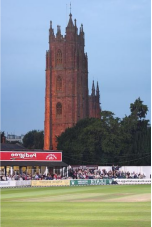
III. Economy
Regional gross value added by the non-metropolitan county of Somerset at current basic prices. Figures are in millions of British pounds sterling. | ||||
Year | Regional Gross Value Added | Agriculture | Industry | Services |
1995 | 4,601 | 298 | 1,608 | 2,695 |
2000 | 5,872 | 199 | 1,936 | 3,737 |
2003 | 6,586 | 215 | 1,956 | 4,416 |
Somerset is a county in the south west of England. It is a rural county and transport infrastructure has been significant in industrial development. There is some heavy industry particularly related to the defence technologies and the county has several centres for stone quarrying, although the coalfield is now closed.
IV. Industrial Characterisitics
Major industries:
Somerset has few industrial centres. Bridgwater was developed during the Industrial Revolution as the West Country's leading port. The River Parrett was navigable by large ships as far as Bridgwater. By then loading the cargoes onto smaller boats at Langport Quay, next to the Bridgwater Bridge, they could be carried further up river to Langport. The Parrett is now only navigable as far as Dunball Wharf; and the wharf is still iis n use today to unload marine gravels and sands. Bridgwater, in the 19th and 20th centuries, was a centre for the manufacture of bricks and clay roof tiles, Bath bricks and later cellophane, but those industries have now closed. With its good links to the motorway system, Bridgwater has developed as a distribution hub for companies such as Argos, Toolstation and Gerber Juice.
The Somerset Levels has historically been a large producer of peat, but ecological concerns have led to the search for alternative materials for applications, such as potting of plants.
AgustaWestland manufacture helicopters in Yeovil. Helicopters were also built at Weston-super-Mare; it is now the home of a helicopter museum - The Helicopter Museum (Weston). Normalair Garratt, who built aircraft oxygen systems, are also based in the town; the company is now part of Honeywell Aerospace.
The county has a long tradition of supplying freestone and building stone. Quarries at Doulting supplied the freestone used in the construction of Wells Cathedral. Bath stone is also widely used. Ralph Allen promoted its use in the early 18th century, but it was used locally long before then. It was mined underground at Combe Down and Bathampton Down Mines, and as a result of cutting the Box Tunnel, at various locations in Wiltshire, including Box. Bath stone is still used today, on a reduced scale; but more often as a cladding, rather than a structural material.
Major projects and related introductions:
1. Comeytrowe
The story so far: the Comeytrowe site was expected to provide 2,000 homes, along with a new primary school, employment units and a 'park and bus' facility to provide public transport links to the town centre via the A38. The borough council granted outline permission in April 2018 for the new homes - though the plans included fewer affordable homes than was originally planned.
2. Monkton Heathfield
The Monkton Heathfield urban extension was originally expected to deliver 4,500 homes across two phases. Under the Local Plan, the site will also deliver three primary schools and one secondary school, with a country park being provided near the Nerrols Farm site and a new local centre with shops and amenities. There has been a lot of progress on phase one - including the delivery of West Monkton Church of England Primary School and a large number of homes -since the first application for 900 houses was approved.
Reference Website:
https://www.somersetlive.co.uk/news/somerset-news/latest-three-huge-projects-build-3984688
V. Attractions
1. Museum of Somerset:
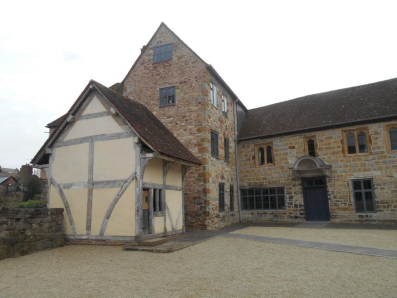
The county museum is in the great hall and inner ward of Taunton Castle, which goes back to the start of the 12th century, even if it has been heavily altered since then. The biggest changes took place in the 1780s when the dilapidated monument was given a through “Gothick” restoration, but Tudor and even Norman elements are still visible.
2. Vivary Park:
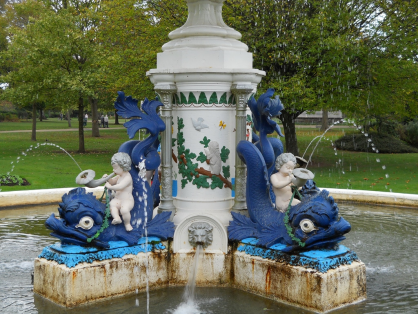
On the southern cusp of the town centre, Vivary Park is Taunton’s prime park, mixing ornamental gardens with family recreation. This 7.5-hectare space is threaded by the Sherford Stream and takes its name from the vivarium (Medieval fish farm) for Taunton Priory that used to occupy this spot. There’s a model railway, miniature golf course, tennis courts, two playgrounds for little ones and an 18-hole golf course for serious players.
3. St Mary Magdalene:
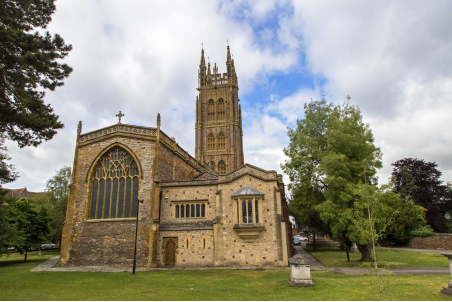
A classic “wool church”, St Mary Magdalene was completed at the beginning of the 16th century with wealth generated by the local wool trade. This grand Perpendicular Gothic monument has the tallest church tower in Somerset, at 50 metres, while the remainder of the building has elements going back to the end of the 12th century.
Reference Website:
https://www.thecrazytourist.com/15-best-things-to-do-in-taunton-somerset-england/
VI. History
The town name derives from "Town on the River Tone or Tone Town. Cambria Farm, now hosting a park and ride close to Junction 25 of the M5 motorway, was the site of a Bronze and Iron Age settlement and Roman farm. There was a Romano-British village near the suburb of Holway, and Taunton was a place of importance in Saxon times. The Saxon town was a burh with its own mint. King Ine of Wessex threw up an earthen castle here about 700, but it was destroyed by his queen, Æthelburg of Wessex, in 722, to prevent its seizure by rebels
Taunton was named as "strategically important" in the government's Regional Spatial Strategy, allowing Somerset County Council to receive funding for large-scale regeneration projects. In 2006, the council revealed plans which it called "Project Taunton". This would see the regeneration of the areas of Firepool, Tangier, the Retail town centre, the cultural quarter, and the River Tone, aiming to sustain Taunton as a central hub for business in the South West.
The "Cultural Quarter" is the area along the river between Firepool and Tangier. The plans are to extend riverside retail and attract more smaller, boutique businesses, such as those found in the Riverside shopping centre.
Plans for the town centre include more pedestrianisation and an increase in the size and number of retail units.
Several sites along the River Tone are set to undergo renovation. Firepool Weir lock, long silted up, was to be dredged in 2011 to allow boats to pass from the navigable section of the Tone through Taunton to the Bridgwater and Taunton Canal. Goodland Gardens received a makeover and a new café, The Shed, opened. Projects to develop Somerset Square (the paved area next to the Brewhouse Theatre) and Longrun Meadow (country park near to SCAT) have been put forward.
Traffic congestion was identified as an obstacle to continuing economic growth. Part of the growth strategy for the town was a new road infrastructure consisting of a £7.5 million link road to ease traffic in the town centre (Taunton's "Third Way"). This was completed in 2011 and a Northern Inner Distributor Road linking Staplegrove Road, the station and Priory Avenue at a planned cost of £21 million opened in 2017.
VII. Culture
Taunton town centre has the Brewhouse Theatre. It closed in February 2013 due to financial difficulties, but reopened in April 2014 under the Taunton Theatre Association (TTA), which was granted the 61-year lease that Taunton Deane Borough Council who had bought of the site and its contents from administrator. Tacchi-Morris Arts Centre is a professional theatre based at Heathfield Community School, hosting touring theatre, dance and comedy, and productions by South West schools and colleges. Tacchi-Morris Arts Centre also runs community classes. The Creative Innovation Centre CIC has an arts and culture venue in the town centre.
Several concerts are held each year Taunton's largest church, St Mary Magdalene. In recent years The Sixteen, The Tallis Scholars and Gabrieli Consort have all performed to full audiences. Taunton also has several choirs and orchestras, which perform in the town's churches and independent schools' chapels. Many local musical and drama groups are members of the Taunton Association of Performing Arts (TAPA), which produces a diary and anti-clash calendar of performances in and around the town.
Taunton is mentioned in The Remains of the Day by Kazuo Ishiguro, Tinker, Tailor, Soldier, Spy by John le Carré, and Evelyn Waugh's Scoop. It was given the fictitious name "Toneborough" by Thomas Hardy. Taunton also features in So Long, and Thanks for All the Fish by Douglas Adams, part of The Hitchhiker's Guide to the Galaxy series. Comedian Bill Bailey mentions the town in his stand-up DVD Part Troll, claiming to have taken part in a teleportation experiment sponsored by Taunton Cider.
VIII. Other information
The parish church of St Mary Magdalene, built of sandstone more in the South Somerset style, preserves an attractive painted interior, but its most notable aspect is its 15th and 16th-century tower, rebuilt in the mid-19th century, which is one of the best examples in the country and a 163 feet (50 m) landmark. It was described by Simon Jenkins, an authority on English churches, as "the finest in England. It makes its peace with the sky not just with a coronet but with the entire crown jewels cast in red-brown stone." The tower itself has 12 bells and 3 bells "hung dead" for the clock mechanism.
The parish church of St James stands near the centre of Taunton quite close to St Mary Magdalene. The oldest parts of St James Church are early 14th century, and there are fragments of 15th-century glass in the west end. Like St Mary's, it has a sandstone tower, but built to a less impressive design. The tower was also, like St Mary's, rebuilt in the 19th century, in this case due to building defects in the original. It backs onto the County Ground forming a familiar backdrop to it.
Church of St Andrew serves the area of Rowbarton.
St George's, the town's Roman Catholic church, dates from the mid-19th century. It was the second Catholic church to be built in Taunton after the Reformation, replacing a much smaller St George's Chapel. The main church building is designated by English Heritage as a Grade II* listed building, while the clergy house is Grade II listed.
IX. Contact information
Mayor/Officer: Francesca Smith
Tel: 0300 304 8000
Mail: PO Box 866, Taunton TA1 9GS
Reference Website:
https://www.somersetwestandtaunton.gov.uk/your-council/mayor-of-taunton/
